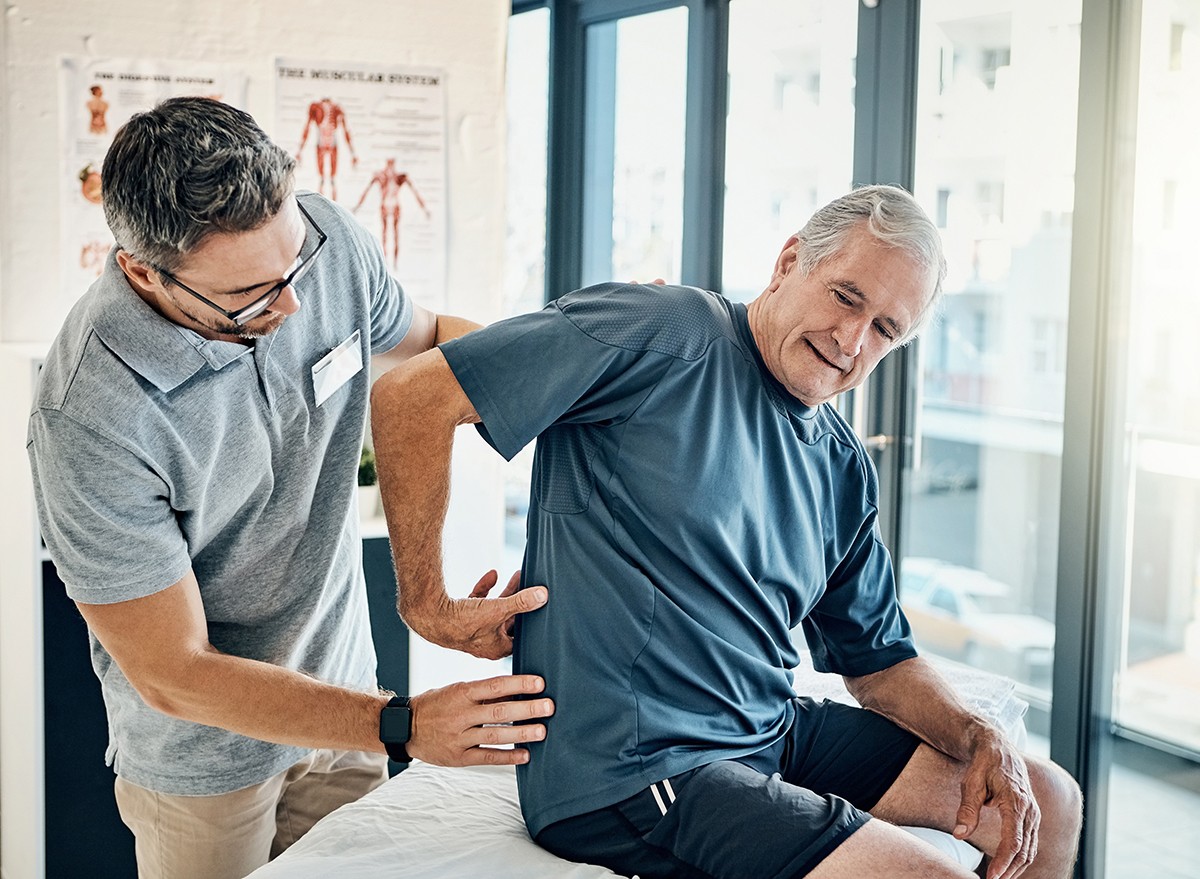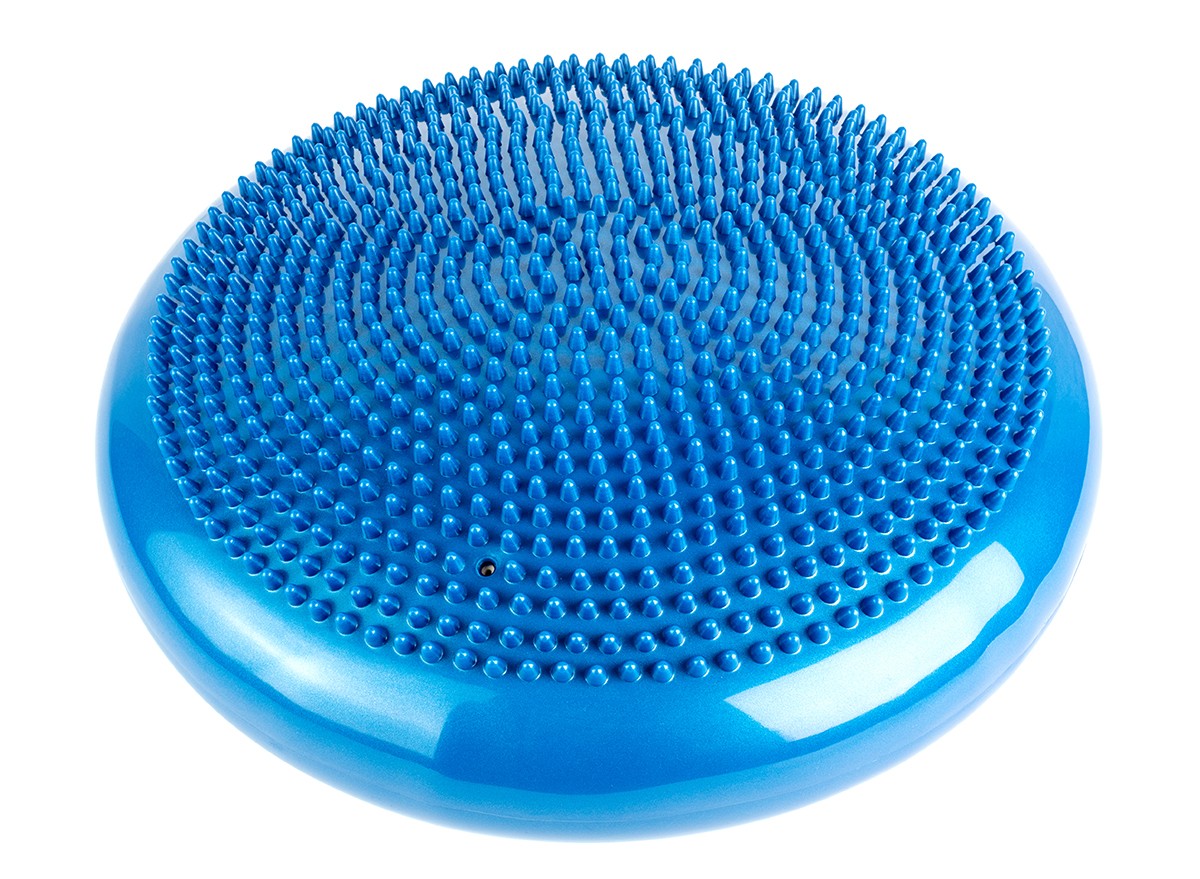I’m a Physical Therapist—Try These 6 Simple Habits to Improve Your Core Balance

Do you struggle with back pain or want to improve your posture? I’ve been there too. As a Physical Therapy Specialist at FYZICAL Therapy and Balance Centers with over 20 years of experience—and someone who has dealt with severe back pain myself—I’ve helped countless individuals strengthen their core and find relief. Whether you’re dealing with chronic discomfort or just want a stronger, more balanced core, these seven simple habits can make a world of difference. Without strength training, I’ve seen how pain can often return, which is why I’ve found that strengthening the back is the most important part of maintaining a healthy core and preventing future pain. Ready to take the first step? Let’s dive into your journey to better balance and well-being.
RELATED: 10 Easy Ways to Improve Your Posture.
The Core: More Than Just Abs

We rely on our core with every movement, so it’s essential to keep it strong and well-balanced for overall health. It’s crucial to remember that the core is three-dimensional. It encompasses not just your front abdominals but also the sides of your torso, including the obliques, as well as the muscles along your back and in the floor of your pelvis. The core also includes the gluteal muscles, supported by your hamstrings and calf muscles. A well-rounded approach to core training ensures that all these areas are effectively engaged and strengthened.
Professional Guidance Is Key

Before diving into these habits, it’s important to consult with a Physical Therapist. Your therapist needs to check for hypermobility or instability, stiffness of the spine, posture, core strength, and any abnormalities, and formally assess muscle length to identify issues. This can help you figure out a maintenance program for your back. Not all bodies are the same, and it’s important to treat different body types accordingly.
Habit 1: Maintaining Good Posture While Driving

One of the most important habits to prevent back pain is maintaining good posture while driving. If you experience recurrent back issues, poor posture behind the wheel might be contributing to the problem. When driving, you’re seated in one position, constantly using your right leg to operate the gas pedal and brake, while your left leg remains inactive. This can create an imbalance, with your right hip flexors working harder than those on the left. Over time, this imbalance may not immediately cause pain but can lead to injury.
Tip for Getting Out of the Car: To prevent your back from “going out,” squeeze your fists together with your knees to activate the adductor muscles of the pelvis before getting out of the car. This action acts like a front-end alignment for your pelvis. In the clinic, we teach self-management techniques to help avoid severe back episodes.
Habit 2: Using a Balance Bubble for Desk Jobs

If you have a desk job, improving core stability while sitting is crucial. For $15-$25, you can purchase a balance bubble from Amazon. I frequently recommend the ProForm Core Balance Disc Trainer. This is a cost-effective and manageable way to engage your core while sitting. When sitting on a balance bubble, your core muscles are constantly engaged. If you slump, you risk falling over. Therefore, if you’re sitting for eight hours a day, you receive continuous posture cues, which help develop your core.
RELATED: Cardio vs. Core: How to Get a Flat Stomach.
Habit 3: Treat Your Back Like a Dress Shirt

One habit that can make a huge difference in back health is treating your back like a dress shirt. This idea comes from an excellent therapist named Jane Mead from California. If you have a nice dress shirt, you place it on a good hanger, keep it in a proper location, and iron it regularly to keep it looking sharp. Similarly, treat your spine with the same care you’d give a nice dress shirt.
My Recommendation for Spine Care: Your spine needs to be smoothed out. I frequently recommend using foam rollers, massage guns, and stretches to smooth out the muscles of the spine. The spine has 24 levels and over 50 synovial joints. Each joint needs to move and be limbered up to feel good. Treat your back like a dress shirt, and it will feel better!
Habit 4: Strengthen the Posterior Chain

Strengthening the posterior chain is essential for back health. Many of us with sedentary jobs aren’t engaged in heavy physical labor, but everyday life still requires lifting. Whether it’s lifting 40-pound grandkids, a 45-pound case of water, or 20 pounds of laundry, the muscles responsible for lifting are part of the posterior chain. These include the paraspinals, glutes, hamstrings, and calf muscles, which all work together to help you lift effectively.
My Journey with Back Strengthening: I remember early in my career being unsure about how important it was to build back strength. Many people are hesitant to perform deadlifts or squats at the gym, but these everyday movements require lifting. Strengthening the posterior chain helps with these tasks and prevents future back pain.
Habit 5: Develop Strength for Everyday Lifting

Elite athletes can deadlift two to three times their body weight, but even lifting lighter weights with excellent form and without pain should be a goal. Performing squats or light deadlifts without pain is a crucial technique for building back strength.
My Personal Routine: I personally perform strength training of the posterior chain after a significant warm-up. After 10 to 12 repetitions, I like to foam roll my back. This helps condition the muscles, increase blood flow, and align all those 50+ joints. Then I tolerate 2-3 further sets of back strengthening without pain.
Also, you don’t need to be an elite athlete, but performing a box squat to the same height as a chair is excellent functional training. As we age, the ability to get up from a chair without using your hands is a significant indicator of quality of life. Maintaining strength throughout your lifespan is crucial.
Habit 6: The Belly-Whack Test for Core Engagement

Keeping your core engaged throughout the day is an essential habit. I often tell patients about the “belly-whack test,” as described in Becoming a Supple Leopard by Kelly Starrett. If you’re standing and a toddler whacks you in the belly, a core that’s about 10% active will handle it without trouble. So, whether you’re standing in line or walking, keep your core engaged at about 10%.
RELATED: This Is the Exercise That “Finally Gave Me Lower Abs.”
My Inspiration for Core Balance

My own experience with back pain early in my career inspired these core balance habits. I struggled with my back going out and had difficulty finding a consistent training program to maintain back health. My brother’s back pain journey also inspired me. As a teenager, he was in a severe car accident, which led to persistent back pain. His commitment to daily back muscle strengthening and regular fitness has allowed him to deadlift over 400 pounds without pain.
Many of my patients aim to lift a grandchild or child without fearing pain. Initially, in therapy, we focus on addressing pain, and then we shift to strengthening the posterior chain. The ultimate goal is to lift without pain or fear.
My Recommendations for Practicing These Habits

I recommend practicing these habits daily. Focus on posture and treat your back like a dress shirt. Incorporate light abdominal exercises and air squats into your routine. Consulting a physical therapist can ensure you’re on the right track for core training and lifelong back care.